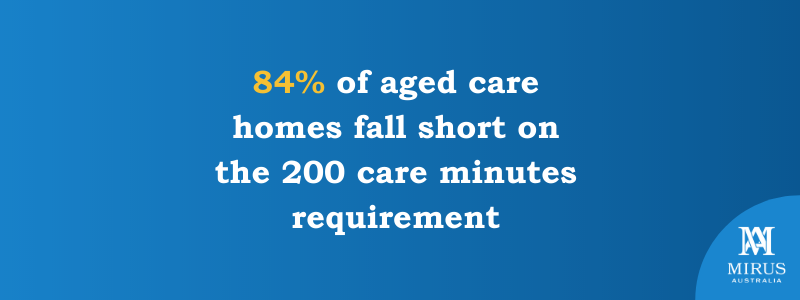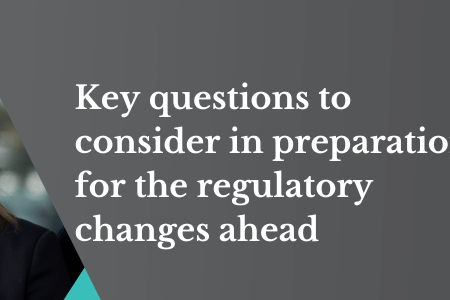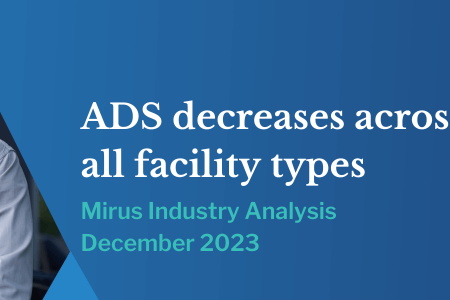Workforce optimisation – what is it and why does it matter?
December 1, 2021 | Aged Care Reform

By Sara Golding, Senior Manager, Workforce
With the introduction of mandated 200 minutes of care per day (including 40 minutes of Registered Nurse time) and a transition to a new funding model, there’s never been a more important time for workforce optimisation.
84% of aged care homes currently fall short on the 200 care minutes requirement being introduced from October 2023 according to Stewart Browns latest Aged Care Financial Performance Survey for June 2021.
But what does workforce optimisation mean?
- Reducing or optimising costs?
- Retaining staff, organisational culture and improving staff engagement?
- Provision of better care to residents?
Or is it a combination of all three?
In a nutshell, workforce optimisation is a business strategy that integrates business performance considerations with workforce management. The strategy involves:
- Process improvement
- Data visibility
- Compliance on legislation and solving business problems related to staffing
It’s connecting all the dots between the information and the people who need it most.
Easy right?
According to Stewart Brown, 58% of aged care homes recorded an operating loss for the six months to December 2020. They predict that by 2022, 65% of all Australian aged care homes will be operating at a loss on current policy settings.
So how could workforce optimisation help?
Workforce optimisation is based on data and getting that information to the right people. One of the greatest advantages of workforce optimisation is the insight it provides into your business. These insights in the right hands can then enable actionable and positive change to be planned and delivered.
Looking more closely at our definition of workforce optimisation:
1. Cost reduction / optimisation
Access to granular data about your resident cohort and labour costs to gain an understanding of whether these are aligned is a key ingredient in cost optimisation. If they are not aligned, for example if the workforce cost is greater than care needs require, what levers can be pulled to align them more closely? Qualitative analysis such as this can provide the insights you need to make informed decisions about the actions you need to take.
Another key ingredient is to benchmark your organisation against other similar organisations. Benchmarking enables an organisation to gain perspective about how well they perform compared to other providers. This knowledge then allows the development of a baseline, define best practice, identify business improvement opportunities, and create a competitive environment within the organisation.
2. Retaining staff, organisational culture and staff engagement
Equally important is the need to consider our most important asset – our people. What do our staff think about working within our organisation? Are they engaged, well trained with a manageable workload? What is the staff retention rate and how is poor performance managed across the organisation? Again, understanding the levers to pull to drive staff engagement and retention is essential for creating a positive work culture and a productive workforce.
So, what can you do?
A good example is Braemar, they conducted a Staff Safety Perception Survey to understand what employee’s thoughts were regarding the safety culture in the organisation. This resulted in the development of the Safety & Wellness Framework. Braemar’s participation in the Corporate Champions program helped them to recognise the importance of merging staff wellbeing, company culture and occupational health and safety to create a holistic approach to health and wellbeing within the organisation. These steps ultimately reduced absenteeism and improved staff retention.
3. Provision of better care to residents
What about our residents and their families? What do they think about the care they receive? Qualitative analysis can highlight issues we weren’t aware existed but can also confirm the things found in quantitative analysis.
Whilst the Aged Care Quality and Safety Commission assessors may ask some residents about their experiences of living in a facility when they visit, it’s important to gain a full understanding of how your residents and their families perceive the care they receive from you. This can be achieved by carrying out regular pulse surveys of residents and/or families, like employee pulse surveys. Understanding the view of those in your care and acting on that information can make your organisation stand out in a highly competitive market.
Finally, we need to understand and leverage the findings from our analysis to make positive change across the organisation. The ability to drive and make change across all three areas will really make your organisation stand out in the crowd.
In summary
From increasing employee retention in a highly competitive market to optimising your labour spend, the technology you adopt and processes you implement are crucial across all phases of employee management and resident care. Analysing your workforce in a holistic way that helps you understand potential over or underspend, improve staff engagement and simplify processes ultimately improves profitability and care delivery.


